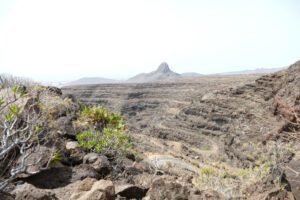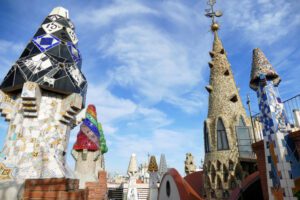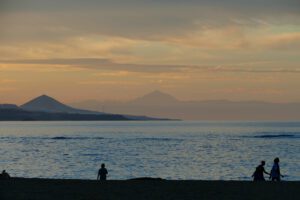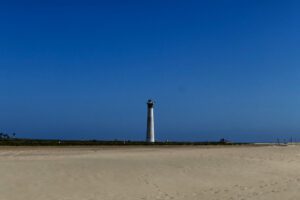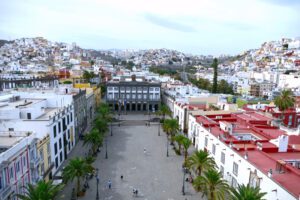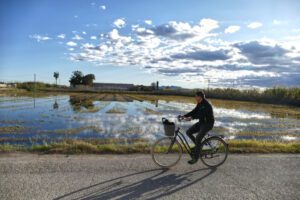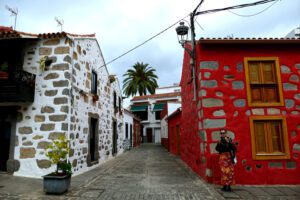The charming town of Felanitx is nestled at the foot of the Serres de Llevant mountain range, from where you can climb the slopes of Puig Sant Salvador to the homonymous monastery, statue, and cross on a lovely day trip.

It was my third day in Mallorca. From exploring the capital city Palma on the first day, I had blisters on my feet so that I couldn’t wear my sandals. On my second day, I got a minor sunburn, so I wanted to avoid too much exposure.
What to do, what to do?
Before coming to Mallorca, I had put together a short list of things I absolutely wanted to do. One of the spots I desired to explore was Sant Salvador, a monastery and some landmarks way up high on the homonymous mountain.
Yes, it’s on a mountain, but on Google Maps, it really didn’t look so far and so challenging. There is a bus going regularly to the nearby town of Felanitx. Hence, a perfect plan for a tranquil little outing.
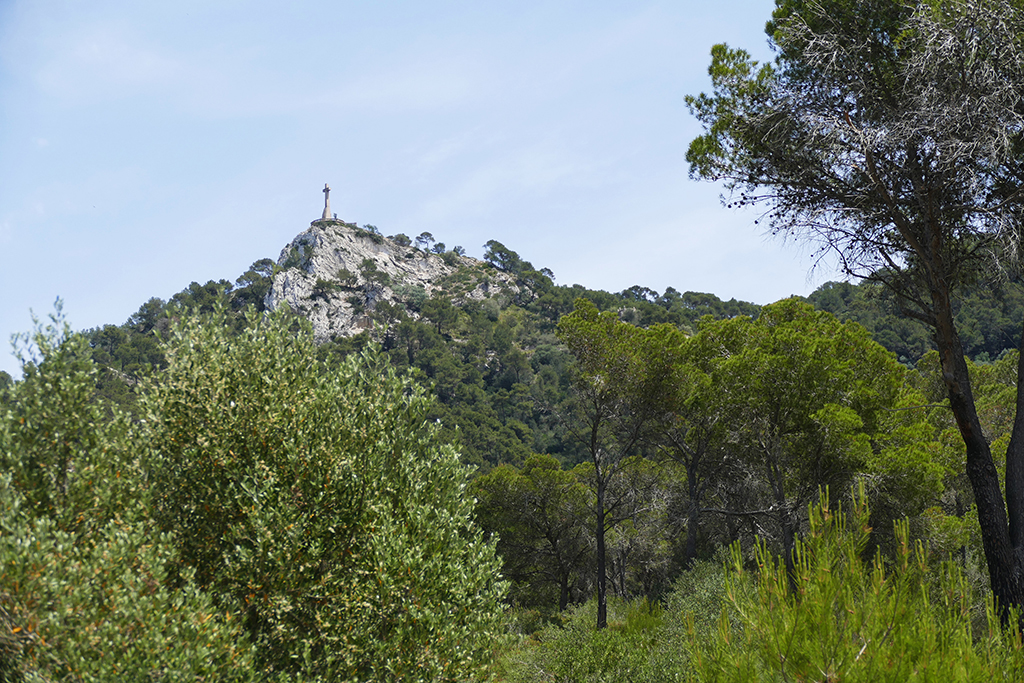
Indeed, the hike from charming little Felanitx up to Sant Salvador is not so long – maybe some seven kilometers. However, five of them are uphill. As I didn’t want to walk on a road that’s winding up in serpentines, the shortcuts between those bends were quite steep. So I was sweating and gasping, and finally, I reached the top. The views were amazing, and I was mighty proud of being the only one who did not make it up there by car but wandered just like the monks before me.
The Road of Champions
Albeit, I must admit that there was a good number of cyclists pedaling up the steep curves – and, as a matter of fact, I find that much, much harder than hiking up even the steepest bit.
Obviously, cycling is a big thing here since at the entrance area of the former monastery and the restaurant is not only a relief of the Last Supper. As a matter of fact, there are also six world champion jerseys on display. Guillermo Timoner, a great son of Felanitx, won those between 1955 and 1965 in the standing race of the track cyclists. He actually trained regularly at Sant Salvador. Phew!
Felanitx
While the region around Felanitx was inhabited already during the Bronze Age when the first people settled in caves at the Puig de Castell de Santueri, the town of Felanitx was founded by the Moors in the 11th century. Numerous windmills were built on a rocky ridge above the village to produce flour. Today, however, they are no longer working and have lost their wings. It’s not as sad as I make it sound, though.
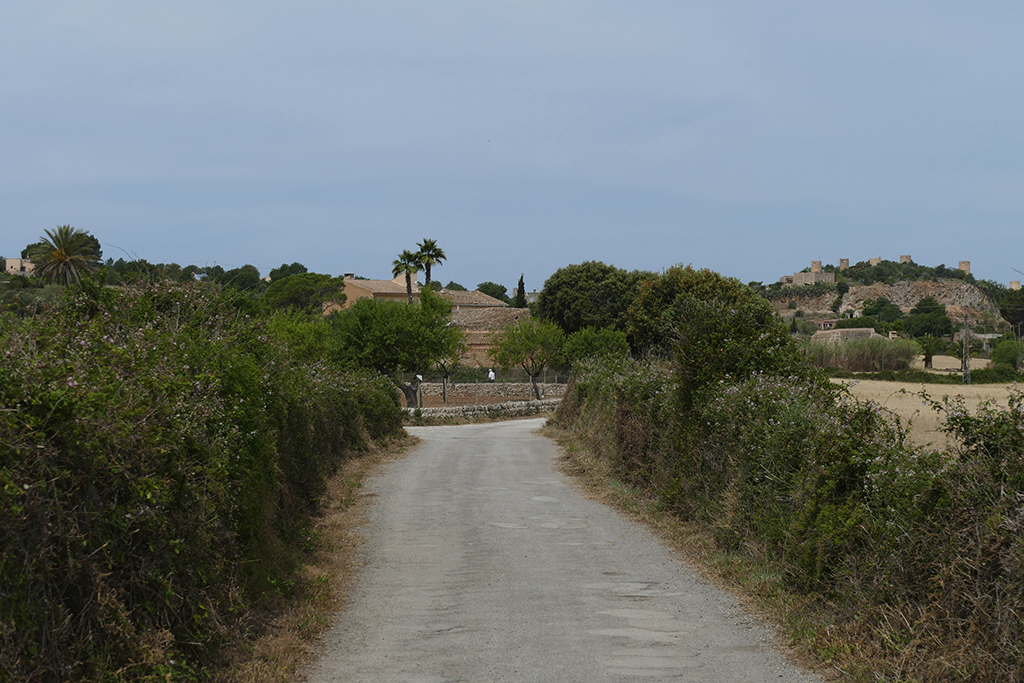
Also, Felanitx was Mallorca’s first wine-growing region. At the end of the 18th century, various grape varieties were planted in an area of around 2,200 hectares. At the end of the 19th century, the insect pest phylloxera destroyed a large part of the vines.
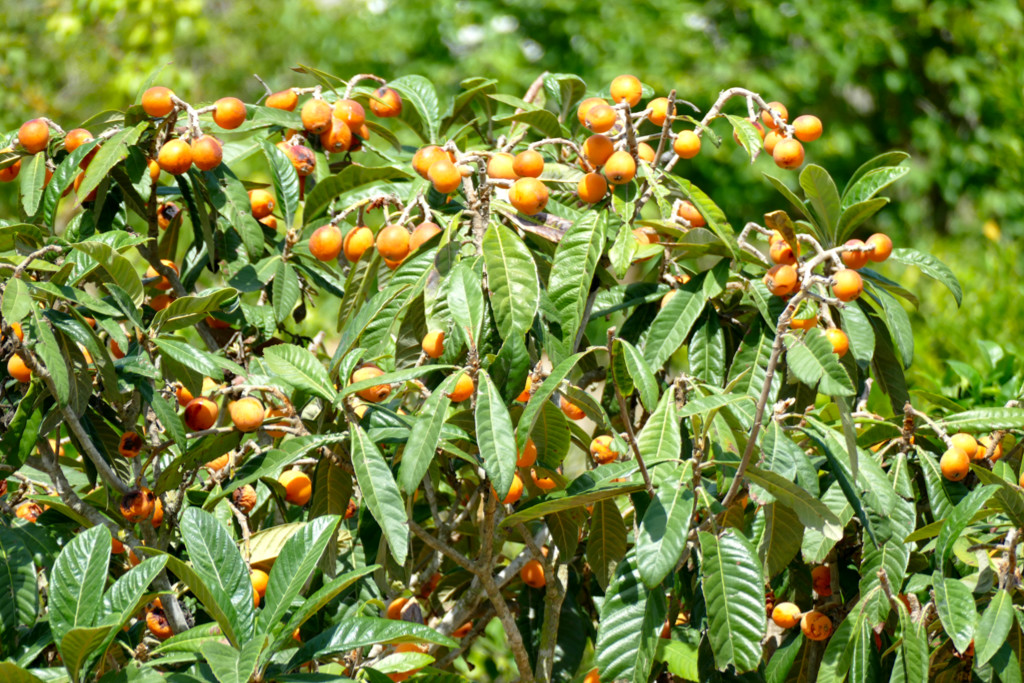
Yet, today, around 75% of Mallorcan white wine comes from the area around Felanitx, but also capers, apricots, and almonds, as well as ceramic handicrafts.
I believe that Felanitx scores rather with its surroundings. Apart from the Sanctuary of Sant Salvador that I’m introducing below, you can also visit the Castell de Santueri, which dates from 1228 and was carved into the rock on the site of an earlier Saracen fortress.
Also, you can hike or cycle to some wine-producing villages such as Son Macia, Son Mesquida, and Son Negre. About seven kilometers south is the village Cas Concos des Cavaller, famous for its hippie community in the 1960s.
Few Highlights
I won’t try to sell you Felanitx as the most alluring or exciting town in all of Mallorca. It’s not. However, there is a very authentic atmosphere. Just stroll around and enjoy the sight of the gold-colored stone houses.

The most imposing building is probably Felanitx’s church San Miguel, which dates to the 16th century. You can enter this house of worship over an extremely broad staircase.
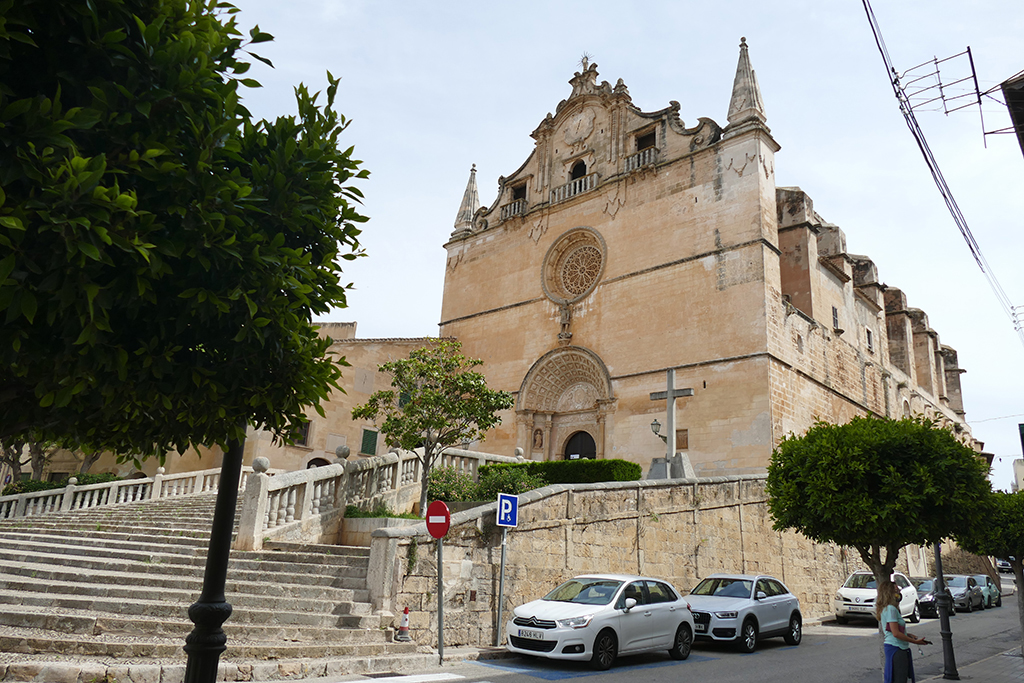
A memorial plaque in the church commemorates the victims of a terrible tragedy, as one of the church walls collapsed on Palm Sunday 1844. This happened during an Easter procession, so that the wall buried 600 faithful, of which 414 died.
Another interesting structure is just across from the church on Plaça de sa Font de Santa Margalida. From the square, there are leading stairs to a water source, the Font de Santa Margalida, obviously.

This source was of great importance, hence, it bears the name of Felanitx’s patroness Santa Margalida. As a matter of fact, it was the city’s only real source of water in Medieval times.
Sant Salvador
The Mountain
The Puig de Sant Salvador is a popular destination for locals and visitors alike. It is a bit over 500 meters high. Although it’s pretty much right on the outskirts of Felanitx, most visitors drive up the approximately 5 kilometers long serpentine road up.
There is a gradient of about 6.4%, yet there were quite a few cyclists pedaling up that hill. I was deeply impressed as I was sweating and gasping while hiking, which to me seems still easier than cycling.
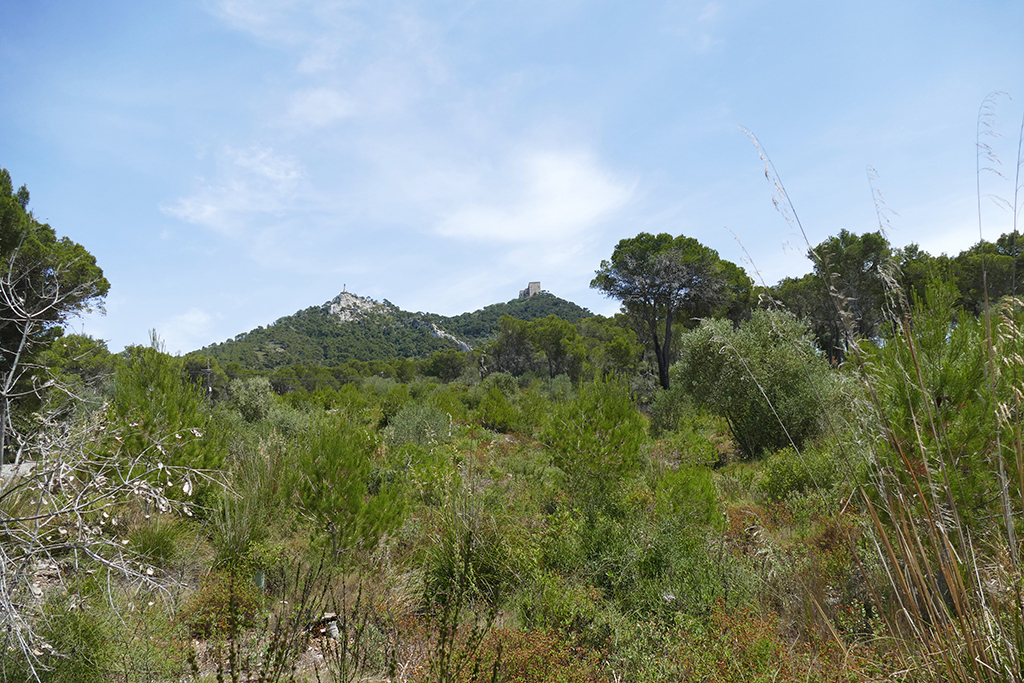
At its summit is the Santuari de Sant Salvador, a pilgrimage church and former monastery. However, the first sight you reach is a 20-meter-high stone cross on the Puig des Milá, a little below. Next is a colossal Christo Rei statue, and then you finally reach the top, from where you have a panoramic view of almost the whole island.
The Monument
On the southern part of the summit plateau, there is a monument of Christ Pantocrator or Cristo Rei. The entire monument is 37 meters high, as a 30-meter-high base carries a 7-meter-high sculpture of Christ made of blackened bronze.
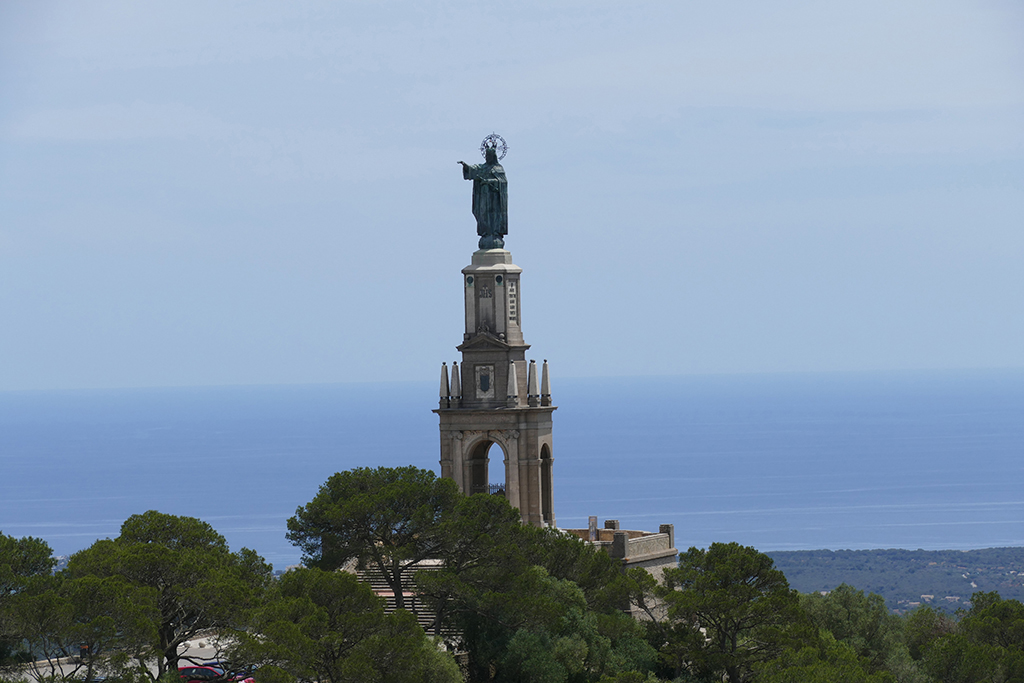
Cristo Rei is standing upright, graciously stretching out his right hand. His head is adorned with a crown and surrounded by a halo containing the Latin inscription Rex Regum Dominus Dominantium, which translates to King of kings and Lord of the rulers. On His chest, you can see the Sagrado Corazón de Jesús, hence, the Sacred Heart of Jesus.
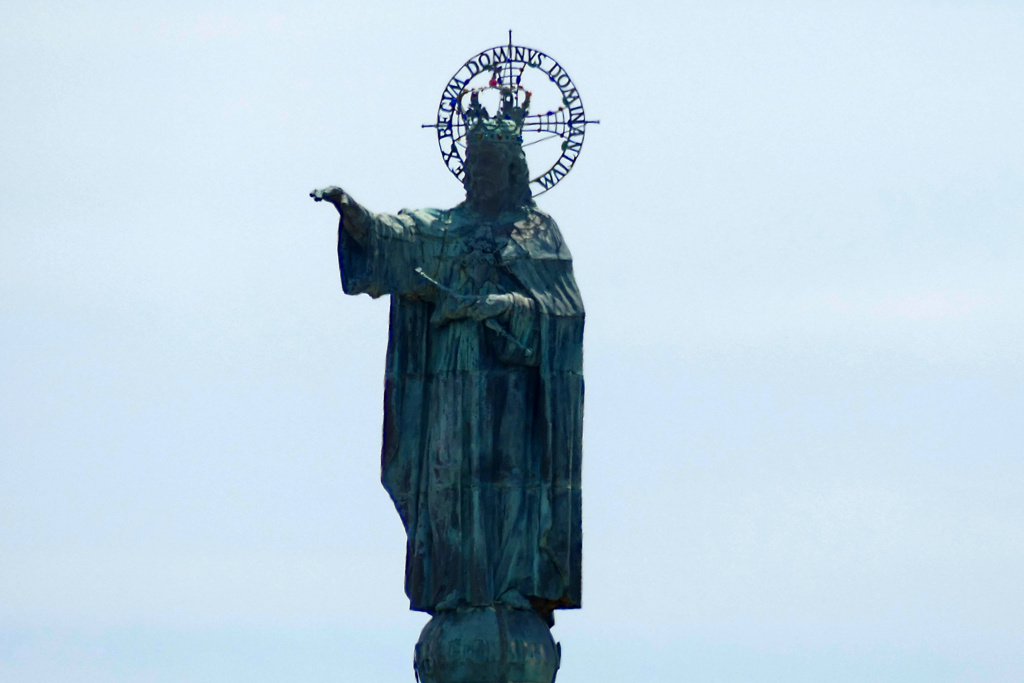
The inauguration of the Monumento al Sagrado Corazón or Monumento de Cristo Rey took place in 1934.
Under the base of the monument, there is a chapel for prayer and meditation. It contains the remains of Canónigo D. Mateo Alzamora, who had commissioned the monument, as well as five hermits from the Santuari de Sant Salvador. Unfortunately, the chapel is not open to the public.
Due to the strong contrast between the statue’s rigid and crude appearance in the Spanish Herrera style from the late Renaissance and Counter-Reformation and the simple architectural style of the monastery, the monument was very controversial for the longest time. Today, however, it is quite popular.
The Cross
About 250 meters from the summit plateau north of the Puig de Sant Salvador is Puig des Milá. With a height of 478 meters, it is slightly lower. On this mountain is the Creu des Picot.

A short, narrow footpath leads up to the cross. The stone cross is 14 meters high and was erected in 1957. It replaced two earlier ones that bad weather and storms had destroyed. The first wooden cross was erected towards the end of the 19th century. It was replaced by a metal cross 11 meters high that existed between 1927 and 1951.
The Monastery
The Santuari de Sant Salvador is on the summit of Puig Sant Salvador. It is a former monastery and pilgrimage site, founded in 1348.
In the 14th century, the plague ravaged the whole of Europe. An estimated 20 percent of Mallorca’s population died. With a mortality rate of 50 percent, Felanitx was particularly affected.
But even before this tragedy, the Puig de Sant Salvador was a holy place and the site of pilgrimages and processions. However, as the epidemic spread, the need for divine help increased. With the approval of King Pere IV of Aragon, the first chapel in honor of Sant Salvador was completed in 1349.
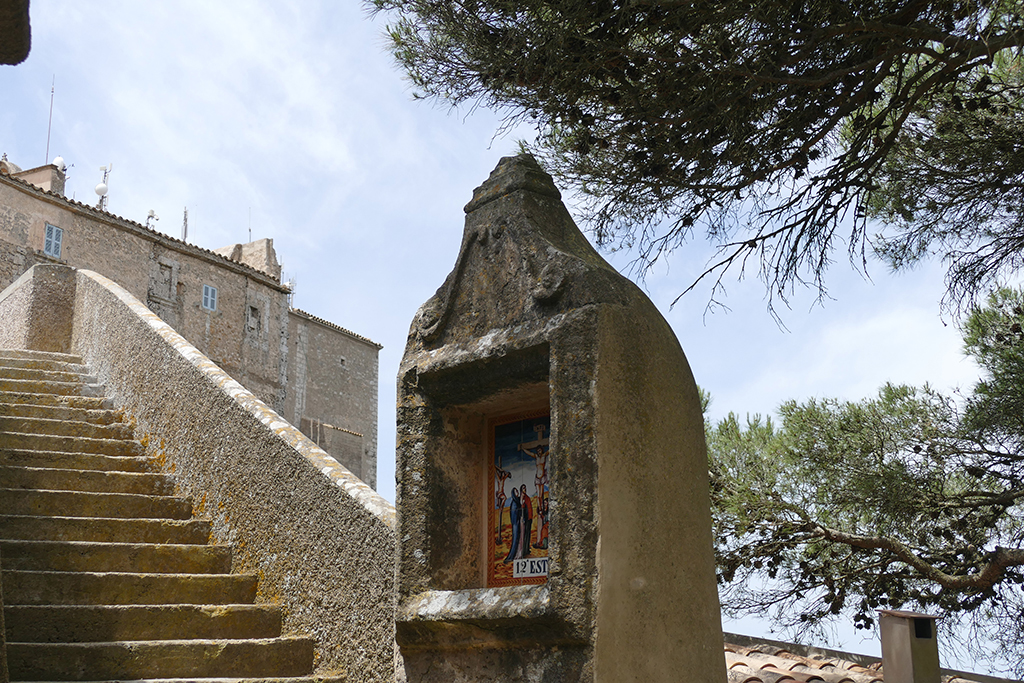
An inn was added next door to accommodate the pilgrims. Later, they built the monastery that housed a school in the 16th century. In the 17th century, it was used as a watchtower during pirate attacks.
After a while, the church was no longer able to accommodate the growing number of pilgrims, therefore, it was remodeled during the 16th and 17th centuries.
Interestingly, it was not until 1824 that the first monks resided in the monastery and managed it from 1851 to 1885.
After secularization, the property went into the possession of the community of Felanitx. They auctioned it off to one of the residents, who then donated the sanctuary to the diocese of Mallorca. To this date, it is in their possession.
The monastery complex was abandoned by the last monks years ago, but thanks to its exposed location in the southeast, it is a very popular excursion destination.
Hiking Up Sant Salvador
Most visitors go up Puig Sant Salvador safely by car. A fairly large car park is available below the complex. But you can also have a bit more sporty and adventurous.
Although I didn’t see any other people actually hiking all the way up, it’s not very complicated or extremely hard. Yes, I did break a sweat, but then again, I’m sweating really easily.
Out of Felanitx
The pilgrimage route leads from Felanitx over the Cami Vell de Sant Salvador to the large stone cross at the foot of the mountain and from there through the pine forest on the north slope up the mountain.
The walk starts in the city of Felanitx at the Parc Municipal de la Torre. It’s called a park, but don’t expect any greenery, it’s rather like a concrete soccer field. Anyway, you have to cross the park and continue on Carrer de Rocabertí eastwards. If you don’t have enough water with you, you can purchase some at the Park Café Restaurant. Your next opportunity to quench your thirst will be way up high at the Bar San Salvador.

Continue on the Carrer de Rocabertí and as you reach the first crossroad, just keep on walking straight ahead. You’ll get to an old factory and one of the old mills close to La Teringa dels Molins. Here you bear left.
Pass the old factory Can Farineta, the old mill, and some orchards. Every time you get to a crossroads, you go straight.
On the Road to Sant Salvador
This way, you advance eastwards between small farms and large, at that time of the year, quite dry fields. The street veers gently to the right until you finally reach road PMV-4011. From now on, you can basically just follow the long and winding main road.
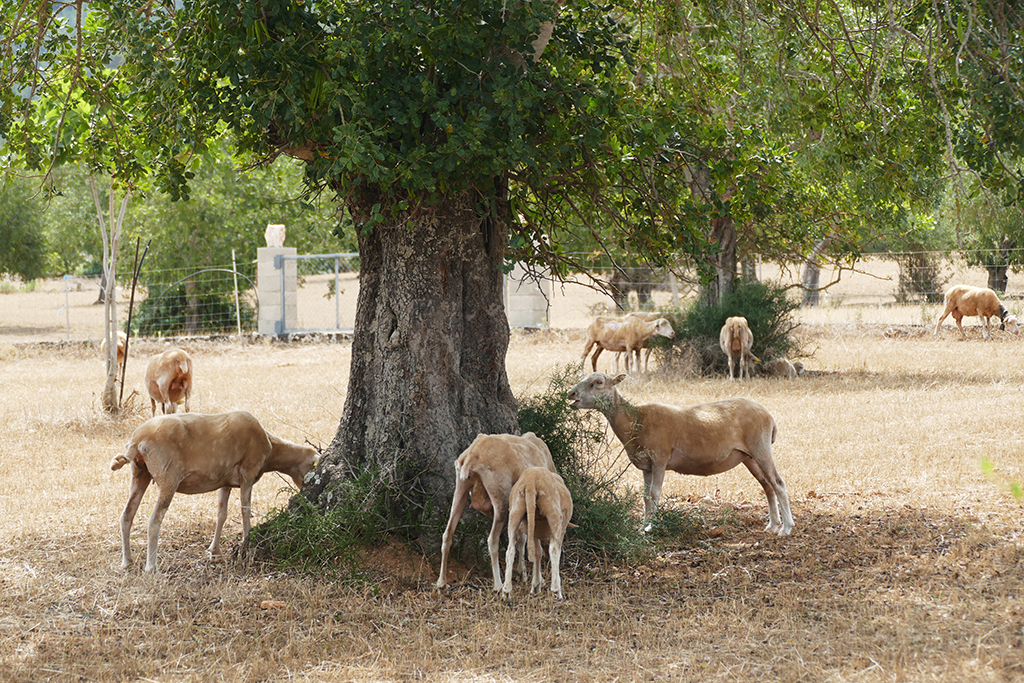
However, as you are hiking, you don’t have to walk up in serpentines as cars and bikes do, but you can take quite steep shortcuts and ‘goat tracks’.
Halfway up the mountain is the Mare Déu del Bon Pastor chapel, short Sa Capelleta. According to legend, here, a shepherd found the statuette of the Mother of God.
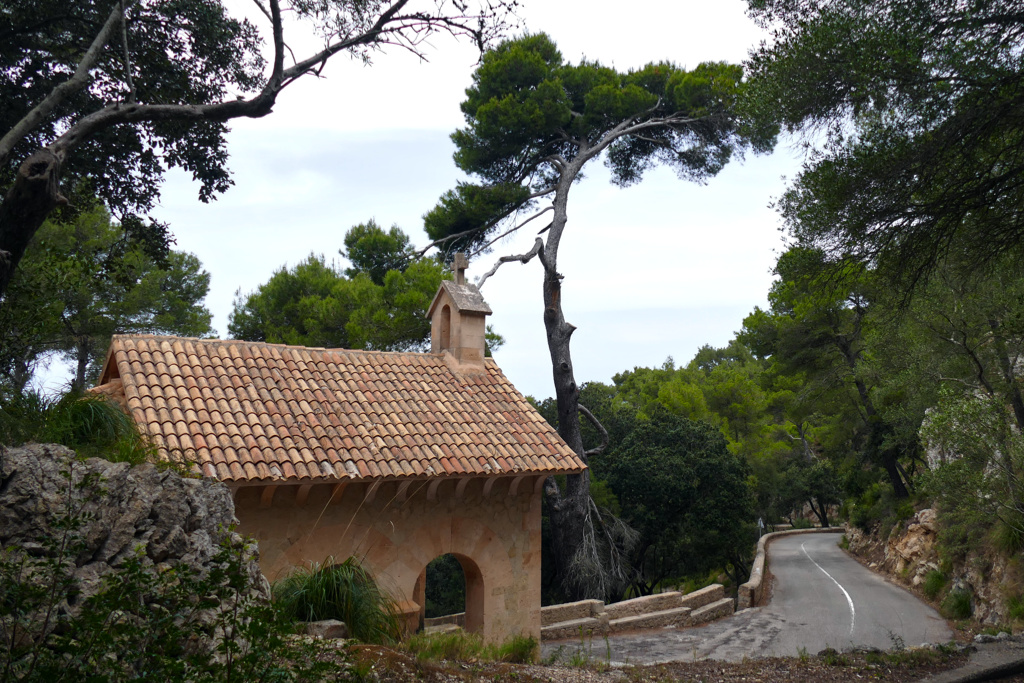
This neo-Romanesque chapel was built in 1910 under Monsignor Antoni Maria Alcover. It replaced an older chapel from the 16th century, which was supposedly richly decorated with azulejos. Today’s chapel is very austere.
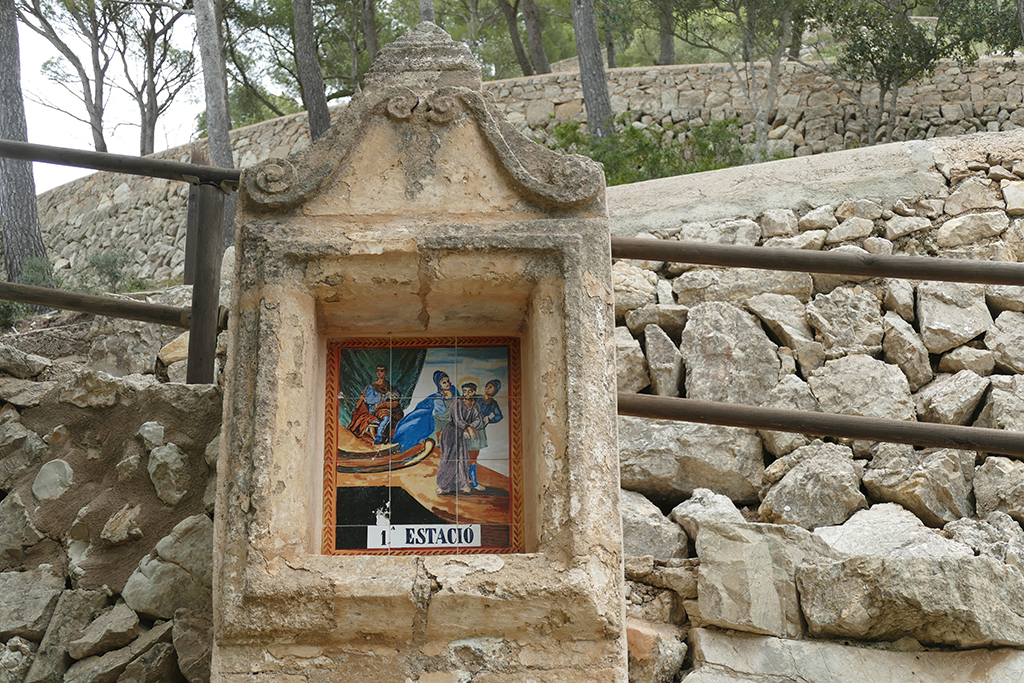
Opposite the chapel, you’ll spot the stairs that are the beginning of the old way of the cross. From here, you’ll pass 13 milestones with azulejos from the 16th century.
A Half-day Tour
The hike from Felanitx to the summit is about 1.5 to 2 hours, whereby you first stop at the cross and make your way up the remaining path. Obviously, you should wear comfortable footwear like good sneakers, preferably hiking shoes. There is no place to get water during the hike, so you’d better make sure to get some at Felanitx. Once you get to the monastery, there is a Café.
If you are an early riser or don’t depend on the last bus back to Palma, which leaves downtown Felanitx at 9.20 p. m., you’ll even have the option to enjoy the sunrise respectively sunset over Mallorca from the summit of Sant Salvador.
How to Get There
Since Felanitx is on the route from Palma to Manacor, another important city, on weekdays, bus #501 goes approximately every hour. There are two stops in Felanitx. The first one is Polígon Felanitx and is a bit on the outskirts. That’s where I got off, and then I had to walk all the way downtown. You do not make this mistake and get off at the following stop Ernest Mestre, which is right in the heart of the city.
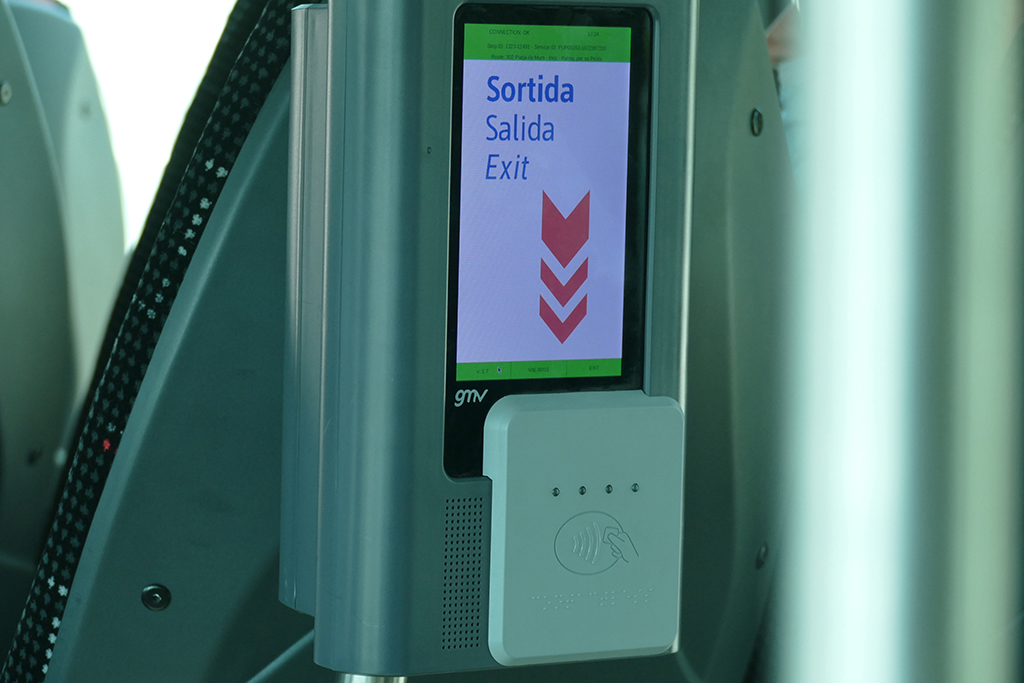
If you don’t start your hike too late, you won’t have to worry about the ride back to Palma. As I said, it’s a highly frequented route with the last connection at 9.20 p.m.
Big Savings
A single ride from Palma to Felanitx costs 7.50 €uro if you pay cash on the bus. As you pay with your credit or debit card, you get a discount – in this case, you pay 40% less. As a matter of fact, if you are planning on taking the bus more often, paying by card will save you a lot of money since discounts go up to 60% depending on your route.
In case your card is not equipped with Near Field Communication – short NFC – you can simply obtain a so-called intermodal card, for instance at the Estació Intermodal in Palma. Then, you just charge and recharge it as needed. This way, you’ll get the same discounts.
Not only is the network of public transportation comprehensive, comfortable, and reliable, but the CTM company also has a very informative website in five languages.
Well-Organized Activities
Although I’m an avid solo-travelling woman, I sometimes like to join organized tours. Not only are they a valid option to go to remote places since I’m not driving. They also allow me to meet fellow travellers – for just a short moment or a lifelong friendship.
Therefore, here are some great ideas of what to do when visiting Mallorca. Especially during high season, pre-booking online will guarantee your place at the activity of your choice*:
My day trip to Felanitx and the hike up Mount San Salvador was only one of many amazing tours during my nine days on the island of Mallorca. To read about the others, go to this post and take your pick!
For general information on Spain, go to the main post. There, you’ll find information and tips that will make your trip much smoother and more enjoyable.
Are you a passionate hiker and wonder which other trails there are to explore on the island of Mallorca? In my post MALLORCA – the best easy hikes, I’ve put together…well, the island’s best easy hikes.
Map
On this map, you’ll find all the wonderful places I’m introducing in this post.
Clicking on the slider symbol at the top left or the full-screen icon at the top right will display the whole map, including the legend.
Pinnable Pictures
If you choose to pin this post for later, please use one of these pictures:



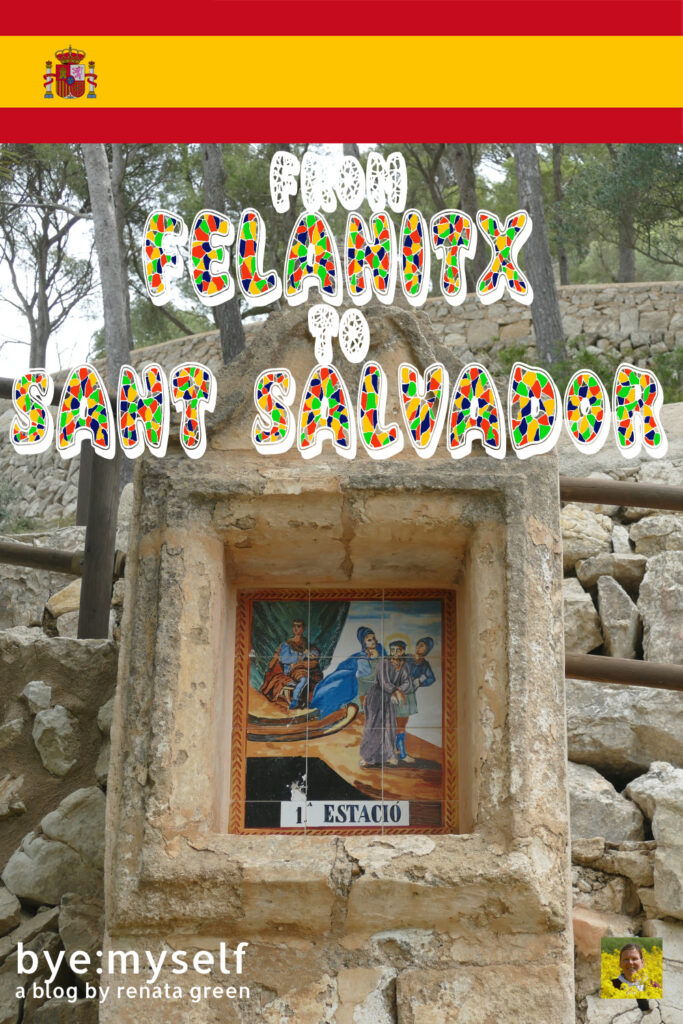
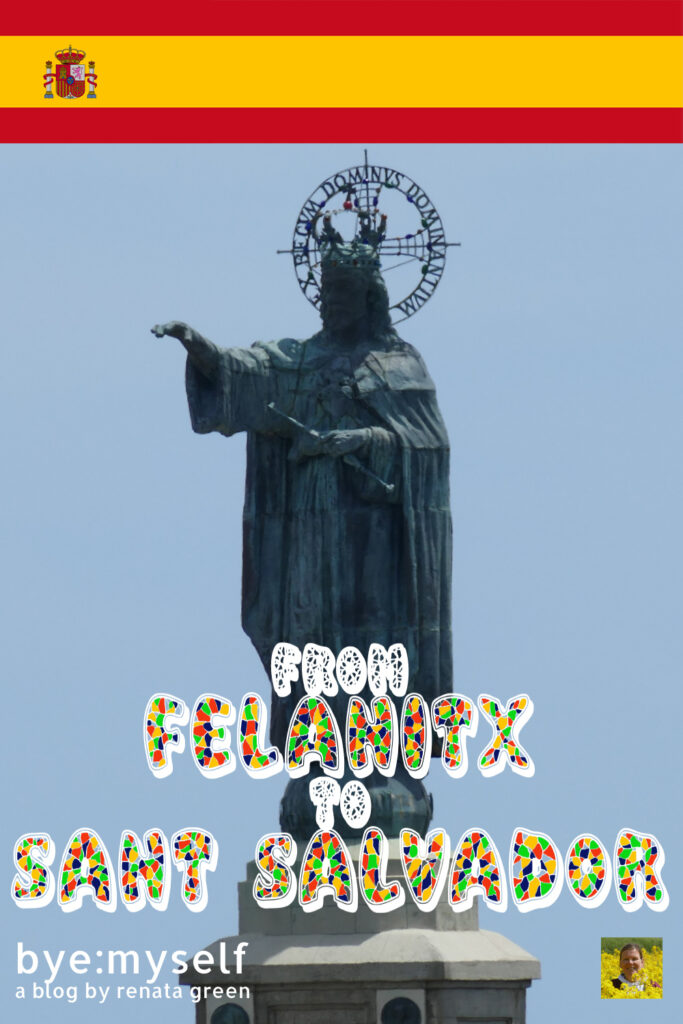
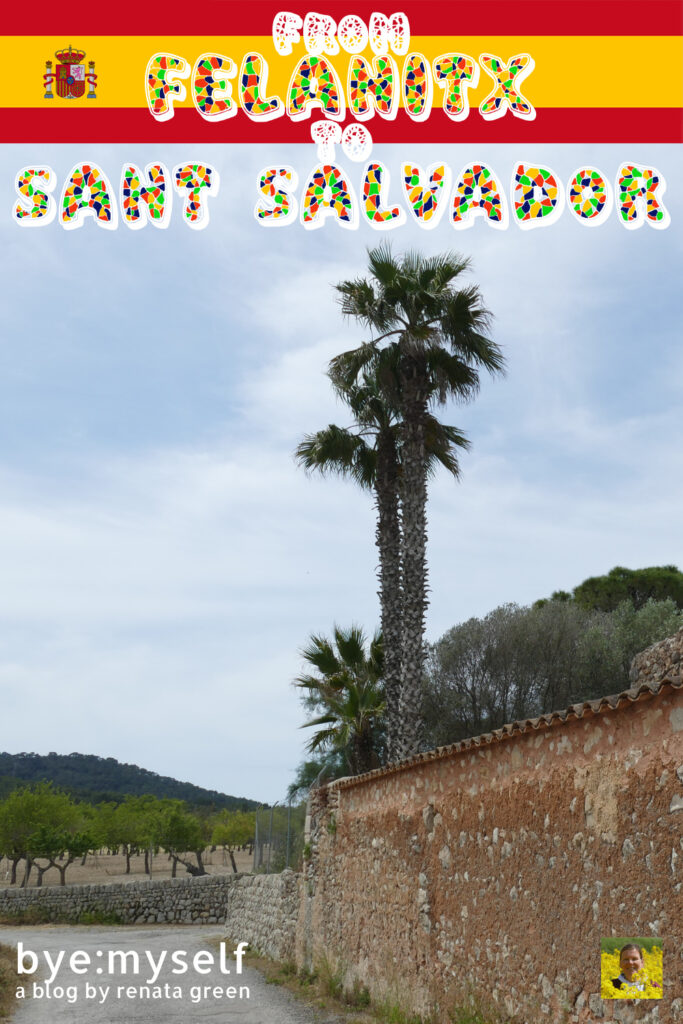
Note: This post is being regularly completed, edited, and updated – last in August 2025.
Did You Enjoy This Post? Then You Might Also Like These:
Break a Leg – My Bumpy First Encounter With Gran Canaria
24 hours in BARCELONA
ISLAND HOPPING in the CANARY ISLANDS
MORRO JABLE – the South Gate to Fuerteventura
Guide to LAS PALMAS – Your Perfect Base to Explore GRAN CANARIA
Day Trip to the Albufera Nature Reserve Outside Valencia
Day Trip to AGÜIMES and SANTA BRIGIDA – going to the heights of beauty
Street Art in SEVILLE: Arte Para Todos in the San Pablo District
* This is an affiliate link. Hence, If you book through this page, not only do you get the best deal. I also get a small commission that helps me run this blog. Thank you so much for supporting me!
